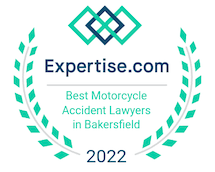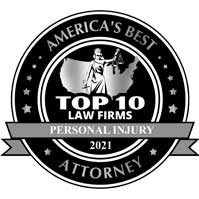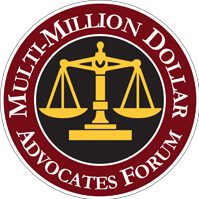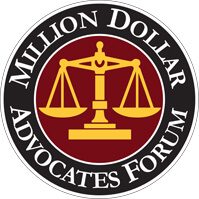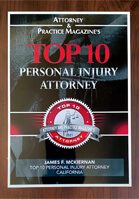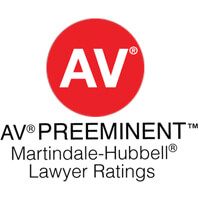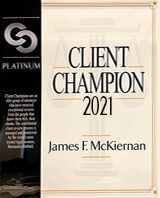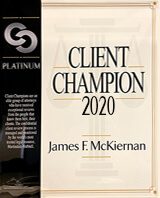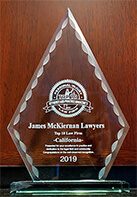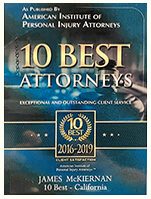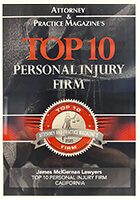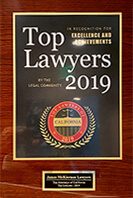Who Is Liable for a Construction Zone Accident?
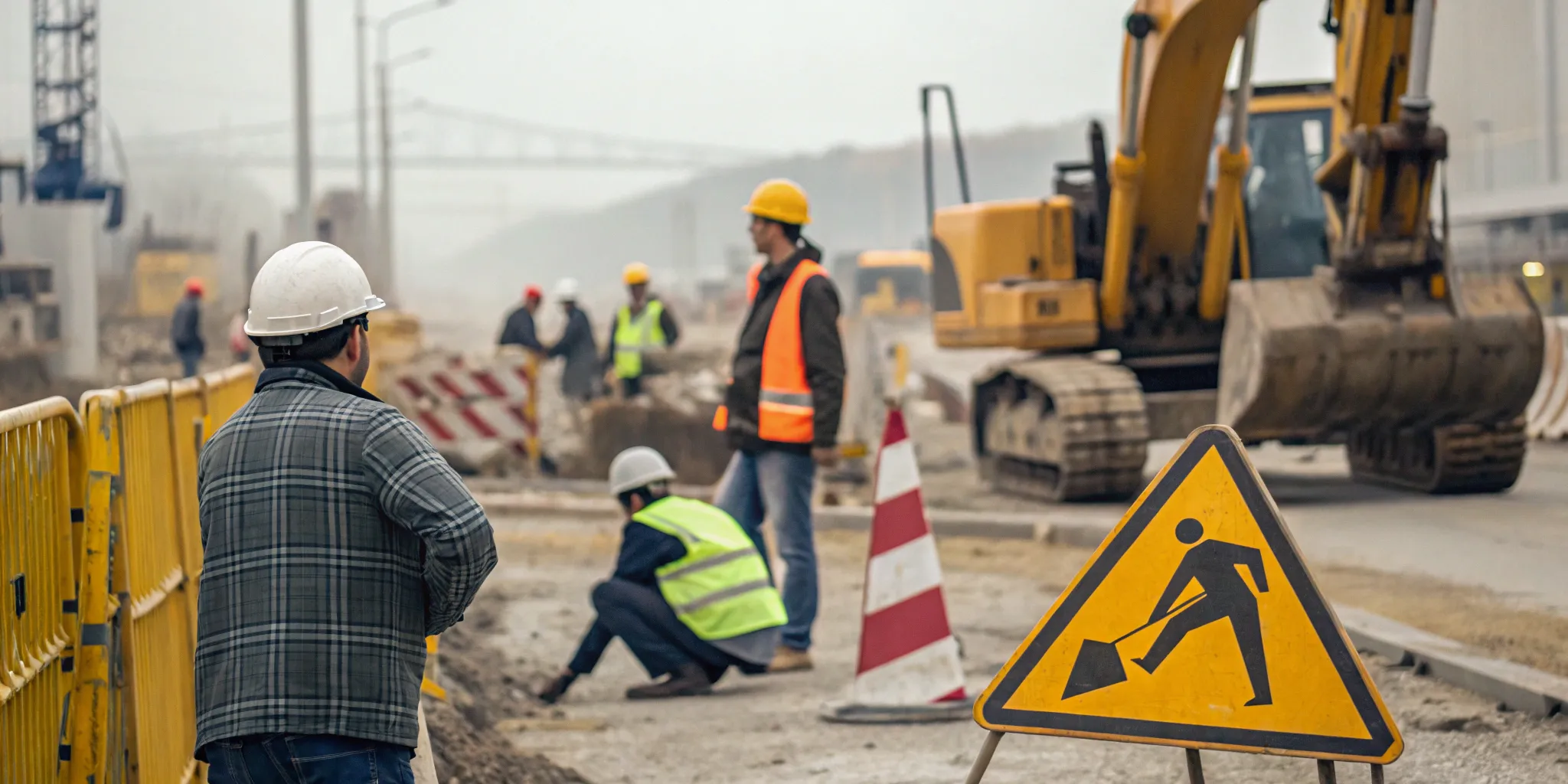
Even when you’re driving carefully, a construction zone can present unexpected dangers. A sudden lane shift without proper warning, loose gravel on the road, or confusing signage can cause even the most cautious driver to lose control. When the environment itself is hazardous, it’s clear the accident wasn’t just your fault. But this raises a complicated legal challenge: who is liable for an accident in a construction zone when unsafe conditions are to blame? It could be the construction company for failing to post clear warnings, a subcontractor for leaving debris in the road, or even a government entity. This article will walk you through the potential responsible parties and the steps to take to protect your rights.
Key Takeaways
- Liability is often layered: Don’t assume only one person is at fault. Construction companies, government agencies, and equipment manufacturers can all share responsibility for creating unsafe conditions, and you can seek compensation from each negligent party.
- Your case is built on evidence: The strength of your claim depends on the proof you gather. Immediately after an accident, prioritize collecting photos of the scene, the police report, witness contact information, and detailed medical records to create a clear link between the accident and your injuries.
- Safety rules are not optional: Construction companies are legally required to follow strict safety protocols, from posting clear warning signs to managing traffic. Proving they violated these rules is a powerful way to establish their negligence in your personal injury claim.
Why Are Construction Zones So Dangerous?
Construction zones are a necessary part of keeping our roads and buildings safe, but they introduce a mix of hazards that can lead to serious accidents. With heavy machinery, sudden lane changes, and workers on foot, these areas require extra caution from everyone involved. When things go wrong, it’s often because someone overlooked a critical safety detail. Understanding the common risks is the first step in figuring out what happened and who should be held accountable.
Common Causes of Accidents
Accidents in construction zones rarely happen out of the blue. More often, they are the result of negligence. Speeding is a major factor, as drivers fail to slow down for the changed conditions. Distracted driving, like texting, is another frequent cause. But it’s not just drivers who contribute to the danger. Accidents can also be caused by construction companies leaving equipment in the road or failing to post clear warning signs. Figuring out the exact cause of a construction zone accident is often complicated because so many different factors can be at play.
Safety Rules That Should Be Followed
To prevent these kinds of accidents, strict safety regulations are in place. Organizations like the Occupational Safety and Health Administration (OSHA) set clear standards for everything from how to manage traffic to what safety gear workers must wear. These rules are not just suggestions; they are legal requirements. When a construction company cuts corners or ignores these regulations, they create a dangerous environment. Proving that a company violated these established safety protocols can be a crucial piece of evidence in a personal injury claim, showing that their negligence directly led to your injuries.
Common Types of Accidents
The unique environment of a construction zone leads to specific types of accidents. For drivers, this often involves rear-end collisions from sudden stops or collisions with road barriers and equipment. For workers, the dangers are even more pronounced. They face risks like falls from scaffolding, electrocution, and being struck by vehicles or falling objects. In fact, contact with construction vehicles is one of the leading causes of injuries and deaths for highway workers. Each of these scenarios points back to a breakdown in safety procedures.
Who Can Be Held Responsible for an Accident?
After a construction zone accident, figuring out who is at fault can feel like untangling a complicated knot. It’s rarely as simple as pointing a finger at one person. Construction sites are busy places with many moving parts and multiple parties working together, from the company running the project to the government agency that owns the road. This means that several different people or entities could share the blame for the conditions that led to your accident.
Identifying every responsible party is a critical step in your case. It ensures that you can seek fair compensation from everyone who contributed to your injuries. An experienced attorney can investigate the accident scene, review contracts and safety logs, and determine which parties failed in their duty to keep you safe. Let’s walk through the most common parties who can be held liable in a construction zone accident claim.
Construction Companies and Contractors
The construction company and its contractors are often the first place to look. They have a direct responsibility to maintain a safe environment for both their workers and the public passing through the area. This includes posting clear warning signs, managing traffic flow with flaggers or barriers, ensuring proper lighting for night work, and clearing away debris. If they cut corners on safety—by creating dangerously narrow lanes or failing to warn drivers of a sudden drop-off, for example—they can be held liable for any resulting accidents. Their job is to anticipate and manage the risks their work creates for others.
Government Agencies
Sometimes, the responsibility goes beyond the construction company and lands with a government agency. City, county, or state entities that own the road have a duty to ensure it is safe for public use. If a government body knew about a dangerous condition—like a poorly designed detour or a lack of necessary warnings—and failed to take action, they could be held responsible. For instance, if they should have closed a road for safety but didn’t, their negligence could be a key factor in an accident. Filing a claim against a government entity in California has unique rules and shorter deadlines, making it crucial to act quickly.
Property Owners
The owner of the land where the construction is taking place might also be on the hook. Under a legal concept known as premises liability, property owners have a general duty to maintain their property in a reasonably safe condition or warn people of any known dangers. If the property owner was aware of a hazard on their land that contributed to the accident and did nothing to fix it or provide a warning, they could share in the liability. This is especially relevant if the owner retained some control over the construction process or the condition of the property during the work.
Other Drivers
Of course, other drivers on the road can also be at fault. A construction zone doesn’t give anyone a pass to drive carelessly. If another driver was speeding through the work zone, texting while driving, following too closely, or driving under the influence, their reckless actions could be the primary cause of the crash. Even if the construction zone itself was hazardous, a driver’s failure to navigate it with appropriate caution can make them partially or fully responsible for an accident. In California, multiple parties can share fault, so another driver’s negligence doesn’t necessarily remove responsibility from the construction company or other entities.
Equipment Makers
In some cases, the fault lies with the tools and machinery being used on site. If a piece of equipment—like a crane, a vehicle, or even a traffic barrier—was defective and malfunctioned, the manufacturer could be held responsible through a product liability claim. This happens if the product had a design flaw, a manufacturing defect, or came with inadequate safety warnings that led to the accident. For example, if a vehicle’s brakes failed due to a manufacturing error or a traffic signal malfunctioned because of a design flaw, the company that made the product could be held liable for the injuries it caused.
How to Prove Who Was at Fault
Figuring out who is responsible for a construction zone accident is the most critical part of your case. It’s rarely as simple as pointing a finger at one person or company. Proving fault requires a detailed investigation to piece together what happened and show that someone’s negligence led to your injuries. This process involves gathering solid evidence, understanding how California law applies, and preparing for the arguments the other side might make. Let’s walk through what it takes to build a strong case and establish who was at fault.
What Evidence Do You Need?
To prove what happened, you need strong evidence. Think of it as collecting the puzzle pieces that create a clear picture of the accident. Key items include the official police accident report, your medical records detailing your injuries, and photos or videos of the accident scene, your vehicle, and your injuries. Eyewitness statements are also incredibly powerful, as they provide a third-party perspective. In complex cases, we might also bring in expert testimony from accident reconstruction specialists. For construction sites specifically, we’ll look for crucial documents like safety logs and work records, which can show whether the company was following mandated safety procedures.
When Multiple Parties Are at Fault
Construction zone accidents are often complicated because several different parties could share the blame. It might be the general contractor, a subcontractor, an equipment manufacturer, or even a government agency. The good news is that California law allows for this. The state follows a “pure comparative negligence” rule, which means you can still recover compensation even if you were partially at fault for the accident. For example, if you are found to be 10% responsible, your total compensation award would simply be reduced by 10%. This system ensures that all negligent parties are held accountable for their share of the responsibility.
How California’s Laws Affect Your Claim
California law puts a significant responsibility on construction companies and public agencies to keep work zones safe for the public. Proving that they failed in this duty requires a thorough investigation into the specific circumstances of your accident. We need to show that the at-fault party owed you a duty of care, they breached that duty through a negligent act or omission, and that breach directly caused your injuries. Understanding the specific state and local regulations that apply to the construction site is key. An experienced California personal injury lawyer will know exactly which laws and standards to reference to build the strongest possible claim for you.
Common Arguments the Other Side Might Use
When you file a claim, don’t be surprised if the other side tries to shift the blame. The construction company’s insurance provider will work hard to pay out as little as possible. They might argue that you were the one at fault—perhaps claiming you were speeding, distracted by your phone, or ignored warning signs. They could also try to point fingers at another party, like a subcontractor or a different driver. General contractors, who are often responsible for overall site safety, may claim they did everything right but an individual worker made a mistake. Our job is to anticipate these arguments and counter them with solid evidence.
Common Myths About Liability
There are a lot of misconceptions about construction zone accidents that can stop people from seeking the help they deserve. One common myth is that if no workers are present, it’s not technically a construction zone accident. That’s false—if the hazardous conditions of the work zone caused the crash, the company can still be liable. Another myth is that by entering an area with warning signs, you automatically assume all risk. This isn’t true; warning signs don’t give companies a free pass to be negligent. Don’t let these myths discourage you. It’s always best to discuss the specifics of your situation with an attorney.
Safety Rules Every Construction Site Must Follow
Construction zones are dangerous by nature, which is why strict safety rules exist to protect both workers and the public. These regulations aren’t just suggestions; they are legal requirements. When a construction company, contractor, or government agency cuts corners on safety, they create an environment where accidents are almost inevitable. If you were injured in a construction zone, understanding these required safety measures is a key step in determining who was at fault. Proving that one of these rules was broken can be a critical part of your personal injury claim.
Following OSHA Standards
The Occupational Safety and Health Administration (OSHA) sets the federal safety standards that all construction sites must follow. These rules cover everything from fall protection and equipment operation to handling hazardous materials. Think of these regulations as the absolute minimum for site safety. If a company violates an OSHA standard and that violation leads to an accident, it can serve as powerful proof in a personal injury case. It clearly shows that the company failed in its duty to maintain a safe environment for everyone in and around the work zone.
Properly Training and Supervising Workers
Every person on a construction site must be trained for their specific job and understand all the safety protocols involved. Companies have a legal obligation to provide this training and to supervise their employees to make sure they are following safety procedures. Unfortunately, many accidents happen because construction workers are not properly trained or are left unsupervised in high-risk situations. If an improperly trained worker operates machinery negligently or creates a hazard that causes your injury, their employer can be held liable for failing to provide the necessary education and oversight.
Securing the Construction Site
A construction company’s responsibility extends to the entire work zone. They must take active steps to secure the site and protect drivers, pedestrians, and workers from potential dangers. This includes clearing debris from roadways, ensuring there is adequate lighting for nighttime visibility, and making sure traffic lanes are not dangerously narrow. When a company fails to maintain the area and an accident occurs as a result, the construction company can be blamed for its negligence. A safe site is a well-maintained site, and anything less is simply unacceptable.
Managing Traffic Safely
Controlling the flow of traffic through and around a work zone is one of the most critical safety tasks. This goes far beyond just putting up a few orange cones. Effective traffic management involves using clear, physical barriers to separate workers from moving vehicles, creating safe detours, and having flaggers present to direct drivers when lanes are closed. The goal is to create a predictable and safe path for everyone. When traffic isn’t managed correctly, it can easily lead to head-on collisions, rear-end accidents, and other serious crashes that could have been prevented.
Using Clear Warning Signs
Drivers need enough time to react to changing conditions in a construction zone. That’s why clear and effective warning signs are non-negotiable. Signs should be placed well in advance of the work zone to alert drivers to slow down, merge, or prepare for a detour. Not enough warning signs, or signs that are confusing or poorly placed, can lead to driver error and preventable accidents. These signs are the first line of defense, and when they are inadequate, the company responsible for placing them can be held accountable for any resulting harm.
Carrying the Right Insurance
Just as drivers are required to carry auto insurance, construction companies and contractors must carry specific types of liability insurance. These policies are designed to cover accidents and injuries that happen because of their work. This is a crucial protection for victims, as it provides a direct source of compensation for medical bills, lost wages, and other damages. Verifying that the responsible parties have the proper insurance coverage is an important step after an accident, as it ensures there is a way for you to recover the financial support you need to heal.
What Are Your Responsibilities as a Driver?
While construction companies and government agencies have a duty to keep work zones safe, you also play a critical role in preventing accidents. Your actions behind the wheel can determine whether everyone—including you and the roadside workers—gets home safely. Driving through a construction zone requires your full attention and a commitment to following the rules of the road, which are often much stricter in these areas. Let’s break down what’s expected of you when you see those orange cones ahead.
Following Speed Limits and Safety Rules
When you enter a construction zone, the first thing you should do is slow down. Those reduced speed limits aren’t just suggestions—they’re the law, and for good reason. Workers are often just feet away from moving traffic. In California, traffic fines are frequently doubled in work zones. The construction zone speed limit law is strictly enforced, and ignoring it not only puts people at risk but can also have serious financial and legal consequences for you if an accident happens. Adhering to these rules and maintaining adequate insurance coverage are your primary responsibilities.
Obeying Signs and Signals
Construction zones are constantly changing environments. That’s why it’s so important to obey all posted signs, cones, and flaggers. These signals are there to guide you safely through lane shifts, detours, and areas with workers present. A flagger’s instructions override regular traffic signals, so you must follow their directions. If you ignore these warnings and cause a crash, you could face significant legal trouble, including hefty fines and higher insurance costs. Paying close attention to these temporary traffic controls is one of the most important things you can do to prevent an accident and protect yourself from liability.
The Dangers of Distracted Driving
A construction zone is the last place you want to be distracted. Yet, many accidents are caused by drivers who aren’t paying attention. The most common reasons for work zone crashes include speeding and distracted driving, like texting or talking on the phone. Other dangerous behaviors include tailgating, making sudden lane changes, or driving while tired. With narrowed lanes, heavy machinery, and workers on foot, even a moment’s inattention can lead to a devastating collision. Put your phone away and keep your focus on the road until you are completely clear of the work zone.
How Your Insurance Is Affected
If you’re involved in an accident in a construction zone, your actions will be closely examined. Insurance companies conduct a thorough investigation to determine who was at fault. If they find you were speeding, texting, or ignoring signs, it can seriously impact your claim. You could be found partially or fully liable for the accident, which means you could be responsible for damages under California’s comparative fault rules. Proving liability in these cases is complex, especially when multiple parties might share the blame. Understanding how your driving behavior affects your insurance and potential legal standing is crucial after a crash.
How to Build a Strong Accident Case
After an accident, building a strong case can feel overwhelming, but it really comes down to one thing: evidence. The more high-quality evidence you can gather, the better your chances are of proving what happened and who was at fault. Think of yourself as a detective for your own case. Every document, photo, and statement you collect is a piece of the puzzle. A strong foundation of proof is essential for holding the responsible parties accountable and securing the compensation you need to recover. The following steps will walk you through the most important types of evidence and how to get them.
Gathering Key Documents
The first step is to collect all the official paperwork related to your accident. This includes the police or accident report, which provides an official account of the incident. You’ll also want to gather contact and insurance information from everyone involved, including any witnesses. Keep a detailed file of all communications you have with insurance companies. These documents create a factual timeline and a paper trail that is critical for your claim. Having everything organized in one place makes it easier for your legal team to build a compelling case on your behalf and fight for the compensation you deserve.
Using Medical Records as Evidence
Your medical records are one of the most powerful pieces of evidence you have. They provide a direct, documented link between the accident and the injuries you sustained. These records are crucial because they offer an unbiased, professional assessment of your physical condition, the treatments you’ve received, and your prognosis for recovery. Be sure to keep every bill, doctor’s note, prescription receipt, and test result. This documentation is essential for establishing the full extent of your damages, from immediate medical costs to the potential need for future care. Without these records, it’s incredibly difficult to prove the true impact the accident has had on your health and well-being.
The Importance of Witness Statements
What other people saw can be incredibly valuable. Eyewitness testimonies provide an objective, third-party perspective that can confirm your account of the accident and help establish liability. If you are able to, get the names and phone numbers of anyone who saw what happened at the scene. A statement from a neutral party who can describe the construction zone’s conditions or another driver’s reckless behavior can significantly strengthen your case. Their observations can fill in critical gaps and counter any attempts by the other side to shift the blame. An experienced attorney knows how to properly interview witnesses and preserve their testimony for your claim.
Taking Photos and Videos of the Scene
If you are physically able, use your phone to take as many photos and videos of the accident scene as possible. Visual evidence is powerful and can capture crucial details that might be missed or forgotten later. Take pictures of the vehicle damage, your injuries, the positions of the cars, any missing or unclear warning signs, poor lighting, and hazardous road conditions in the construction zone. These images can provide undeniable proof of the circumstances surrounding the accident. Capturing this evidence immediately is vital, as construction sites change quickly and vehicles get repaired, erasing important clues that could help prove who was at fault.
Requesting Safety Logs and Records
In a construction zone accident, it’s important to find out if the company in charge was following the rules. Construction companies are required to keep detailed records, including safety logs, work records, and inspection reports. These documents can show whether they followed mandated safety procedures, provided proper training, and maintained their equipment. Your attorney can formally request these records. If the logs reveal that the company was cutting corners on safety, it can serve as powerful evidence of negligence. This information is often key to proving that the construction company, and not just another driver, was responsible for creating the dangerous conditions that led to your accident.
Understanding the Deadline to File
In California, you have a limited amount of time to file a personal injury lawsuit. This deadline is known as the statute of limitations, and if you miss it, you could lose your right to seek compensation forever. For most personal injury cases, the deadline is two years from the date of the injury. While that might sound like a long time, investigating an accident and building a strong case takes time. It’s crucial to act quickly to preserve evidence and protect your rights. Many people hesitate because they worry about the cost, but most personal injury attorneys offer a free consultation and work on a contingent fee basis, which means you don’t pay unless they win your case.
What Compensation Can You Recover?
After a construction zone accident, figuring out how to cover your expenses can feel overwhelming. The good news is that you have options for financial recovery. The path you take depends on the specifics of your accident—whether you were working on the site or just passing through. Understanding these different avenues is the first step toward getting the support you need for your medical bills, lost income, and other challenges you’re facing.
Workers’ Compensation Benefits
If you were injured while working on a construction site, you can typically file for workers’ compensation benefits. This is a no-fault system, which means it pays for your medical treatment and a portion of your lost wages without you having to prove that your employer was negligent. The process is designed to provide benefits quickly so you can focus on your recovery. While you generally can’t sue your employer directly if you receive these benefits, this isn’t always the end of the story, especially if someone else’s carelessness contributed to your injury.
Personal Injury Claims
A personal injury claim is a legal action you can take against a person or company whose negligence caused your injuries. This is the route you would likely take if you were a driver, pedestrian, or cyclist hurt in a construction zone accident. For injured workers, a personal injury claim can be filed against a responsible party other than an employer or co-worker. This type of claim allows you to pursue a wider range of compensation than workers’ comp alone, covering the full impact of the accident on your life.
Claims Against a Third Party
Even if you are receiving workers’ compensation, you might still have a case against another party. These are known as third-party claims. For example, if a faulty piece of equipment malfunctioned and caused your injury, you could file a claim against the equipment manufacturer. Or, if a subcontractor from a different company created an unsafe condition that led to your fall, they could be held liable. Pursuing a third-party claim can help you recover compensation that workers’ comp doesn’t cover.
Types of Damages You Can Claim
In a personal injury or third-party claim, you can seek compensation for a broad range of losses, often called “damages.” These claims can cover things workers’ comp doesn’t, like pain and suffering or emotional distress. Damages are generally broken into two categories. Economic damages cover your financial losses, such as current and future medical bills, lost wages, and diminished earning capacity. Non-economic damages compensate you for the personal, non-financial impact of the injury, including pain, emotional anguish, and loss of enjoyment of life.
How to Protect Your Rights After an Accident
The moments after a construction zone accident can feel chaotic and overwhelming. What you do next, however, can significantly impact your ability to recover physically and financially. Taking a few specific steps can protect your well-being and preserve your legal rights. Think of it as creating a clear record of what happened and how it has affected you. This groundwork is essential for holding the responsible parties accountable and securing the compensation you need to move forward.
What to Do Immediately After the Accident
Your first priority is always safety. Check yourself and your passengers for injuries and call 911 right away to request medical assistance and report the accident. If you are able, move your vehicle to a safe location away from traffic. When the police arrive, give them a clear, factual account of what happened, but avoid speculating or admitting fault. Be sure to get the names and badge numbers of the responding officers and ask for the police report number. Exchange contact and insurance information with any other drivers involved. If there are witnesses, ask for their names and phone numbers. Their perspective could be invaluable later on.
Documenting Your Medical Treatment
Even if you feel fine, it’s crucial to see a doctor as soon as possible after an accident. Some serious injuries, like concussions or internal damage, don’t show immediate symptoms. Seeking prompt medical care ensures you get the treatment you need and prevents minor issues from becoming major problems. This also creates an official record linking your injuries directly to the accident. Follow your doctor’s treatment plan precisely, attend all follow-up appointments, and keep detailed records of every visit, prescription, and medical bill. This documentation is one of the most important pieces of evidence you’ll have when building your injury claim.
Preserving Important Evidence
Evidence is key to proving who was at fault. Use your phone to take photos and videos of the accident scene from multiple angles. Capture the construction zone layout, any warning signs (or lack thereof), road conditions, vehicle damage, and any visible injuries. These images can tell a powerful story. Beyond photos, your evidence file should include the police report, your medical records, and contact information for witnesses. An experienced attorney can also help secure other critical evidence, such as traffic camera footage or the construction company’s safety logs and work records, which can show whether they followed mandated safety procedures.
How to Handle Insurance Companies
Soon after the accident, you will likely get a call from an insurance adjuster. It’s important to remember that their job is to protect their company’s bottom line, not to give you a fair settlement. Be polite but cautious. You only need to provide basic facts about the accident—where and when it happened. Do not agree to give a recorded statement, sign any documents, or accept a settlement offer without speaking to a lawyer first. Proving liability in a construction zone accident often requires a thorough investigation, and an early offer is almost always less than what you deserve.
Knowing When to Call a Lawyer
Navigating the aftermath of a construction zone accident is complicated, especially when you’re trying to recover from your injuries. A personal injury lawyer can lift that burden from your shoulders. An attorney will help you understand your rights, investigate the accident to determine who is responsible, and ensure you don’t miss any critical deadlines for filing your claim. They will handle all communications with the insurance companies and fight to get you fair compensation for your medical bills, lost wages, and pain and suffering. Contacting a lawyer early gives you the best chance of building a strong case and lets you focus on what matters most: your health.
Related Articles
- Top Construction Accident Lawyers in San Luis Obispo
- Who Is at Fault in a Rear-End Collision in California?
- How Can California Negligence Law Affect Recovering Damages?
- Everything You Need to Know About Catastrophic Injuries in California (Symptoms, Lawyers, & More)
- NC Driving Laws to Know About in 2019
Frequently Asked Questions
What if I think I might have been partially at fault for the accident? This is a very common concern, but it doesn’t automatically prevent you from seeking compensation. California follows a “pure comparative negligence” rule. In simple terms, this means that your compensation award is just reduced by your percentage of fault. For example, if you were found to be 10% responsible for the crash, your total recovery would be reduced by 10%. It’s important not to assume you are at fault, as the construction company or another party may hold the majority of the responsibility for creating the hazardous situation in the first place.
The construction company’s insurance adjuster is already calling me with a settlement offer. Should I accept it? It’s wise to be very cautious with early settlement offers. Insurance companies often try to resolve claims quickly and for the lowest amount possible. An initial offer is almost always far less than what you truly need, as it likely doesn’t account for future medical treatments, long-term lost income, or the full extent of your pain and suffering. Accepting an offer means you sign away your right to seek any further compensation, so it’s best to speak with an attorney before agreeing to anything.
How long do I have to file a claim after a construction zone accident in California? In California, the general deadline, or statute of limitations, for filing a personal injury lawsuit is two years from the date of the injury. While this may seem like a lot of time, building a strong case requires a thorough investigation that should begin as soon as possible. It’s also important to know that if a government entity is involved, the deadline to file a formal claim is much shorter—often just six months. Acting quickly is the best way to protect your rights.
I was injured while working on the site. Can I only get workers’ compensation? While you generally can’t sue your own employer if you’re covered by workers’ compensation, you may still be able to file a personal injury lawsuit against a different party. These are called third-party claims. For instance, if your injury was caused by a negligent driver who entered the work zone, a subcontractor from another company, or a defective piece of equipment, you could pursue a claim against that person or manufacturer. This allows you to recover damages that workers’ comp doesn’t cover, like pain and suffering.
What if the accident was caused by a lack of warning signs or a confusing detour? The company or government agency managing the construction project has a legal duty to ensure traffic can move through the area safely. This includes providing clear, adequate, and timely warnings about lane changes, reduced speeds, and detours. If they fail to do this and it leads to an accident, they can absolutely be held responsible for negligence. Poor signage or a dangerously designed detour are common reasons that construction companies are found liable for a crash.









